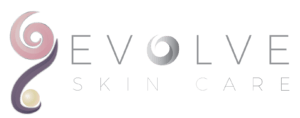Many teenagers are very familiar with Retin-A as an effective topical treatment to combat acne. To our absolute horror, many of us suffering from adult acne are being introduced or reacquainted with Retin-A. But Retin-A is far more than an effective topical acne treatment and hyperpigmentation corrector. In fact, Retin-A is a “surface-repair” treatment that can enhance your appearance and give your skin a smoother and fresher look. That said, Retin-A offers less dramatic results than surgical approaches like dermaplaning, dermabrasion or chemical peel. Furthermore, Retin-A will not remove deep scars and flaws or prevent aging. You should never mistake a Retin-A treatment for mini-facelifts, or else you stand to be greatly disappointed.
Retin-A is usually most effective with older patients who have some fine facial wrinkles, or blotchy pigmented areas caused by sun damage. However, Retin-A is often prescribed to younger, active individuals who want to combat the aging effects of sun exposure. Some cosmetic dermatologist instruct their patients who are planning to have a chemical peel treatment to use Retin-A as a preparation treatment ― Retin-A thins the skin’s outer layer, allowing the acid solution in a peel treatment to penetrate more deeply and evenly. It’s important to highlight that Retin-A is not recommended for pregnant women or nursing mothers, because its effects on the fetus and nursing infant are still being studied.
Retin-A has very few negative side-effects or post-procedure problems. That said, some patients have suffered from temporary redness, irritation, itching, stinging, or skin dryness at the beginning. However, you can expect these symptoms to gradually disappear as the skin becomes acclimated to the treatment. If the symptoms persist, you should contact your cosmetic dermatologist immediately. Because Retin-A’s drying effects to the skin, your doctor may also recommend that you apply a moisturizer once or twice a day to help alleviate the dryness. The drying effect of Retin-A is another reason why you should maintain regular follow-up visits with your doctor, as he/she may need to adjust the strength of your prescription or its frequency of use. Conversely, you may be switched to a stronger formula after your skin becomes accustomed to treatment.
If you decide that Retin-A is your anti aging treatment of choice, you might have to be willing and ready to make a certain number of lifestyle changes in order to take the best care possible of your new skin. Since Retin-A thins out the skin’s outer layer, you will need to consistently use a sun block (a minimum SPF 30 is recommended) to protect yourself from ultraviolet light (UVA, UVB and UVC), and you may have to discontinue using certain products or cosmetics on your face.
It’s been reported that the degree of change varies from person to person, with continued use of Retin-A. Users have reported subtle improvements in the texture and tone of their skin in the beginning stage. They’ve also noticed the disappearance of fine lines and the shrinking of large pores. Within six months, many users report that wrinkles are barely visible and that age spots have faded.
Finally, when considering Retin-A, you might want to keep in mind that in order to maintain the benefits of Retin-A, you may have to use it continually.
You can search the web for information on treatments to reverse wrinkles or simply visit our site: mybeautymatch.com. Visit our site often and you’ll be well informed when is comes to non-surgical facelifts and effective anti-aging products, medical treatments & body and mind health.
© Copyright Beauty Match Network. All rights reserved in all countries.
Follow Us On
Categories
